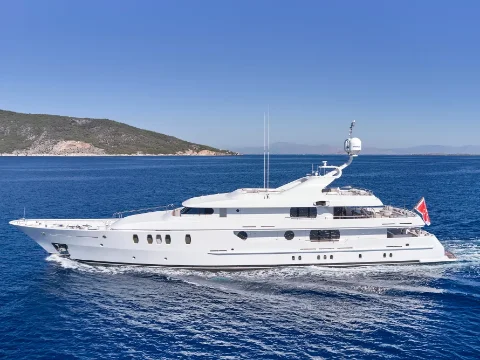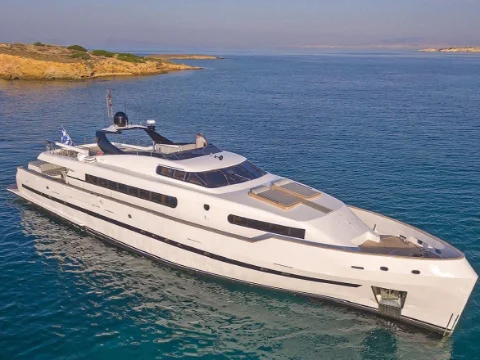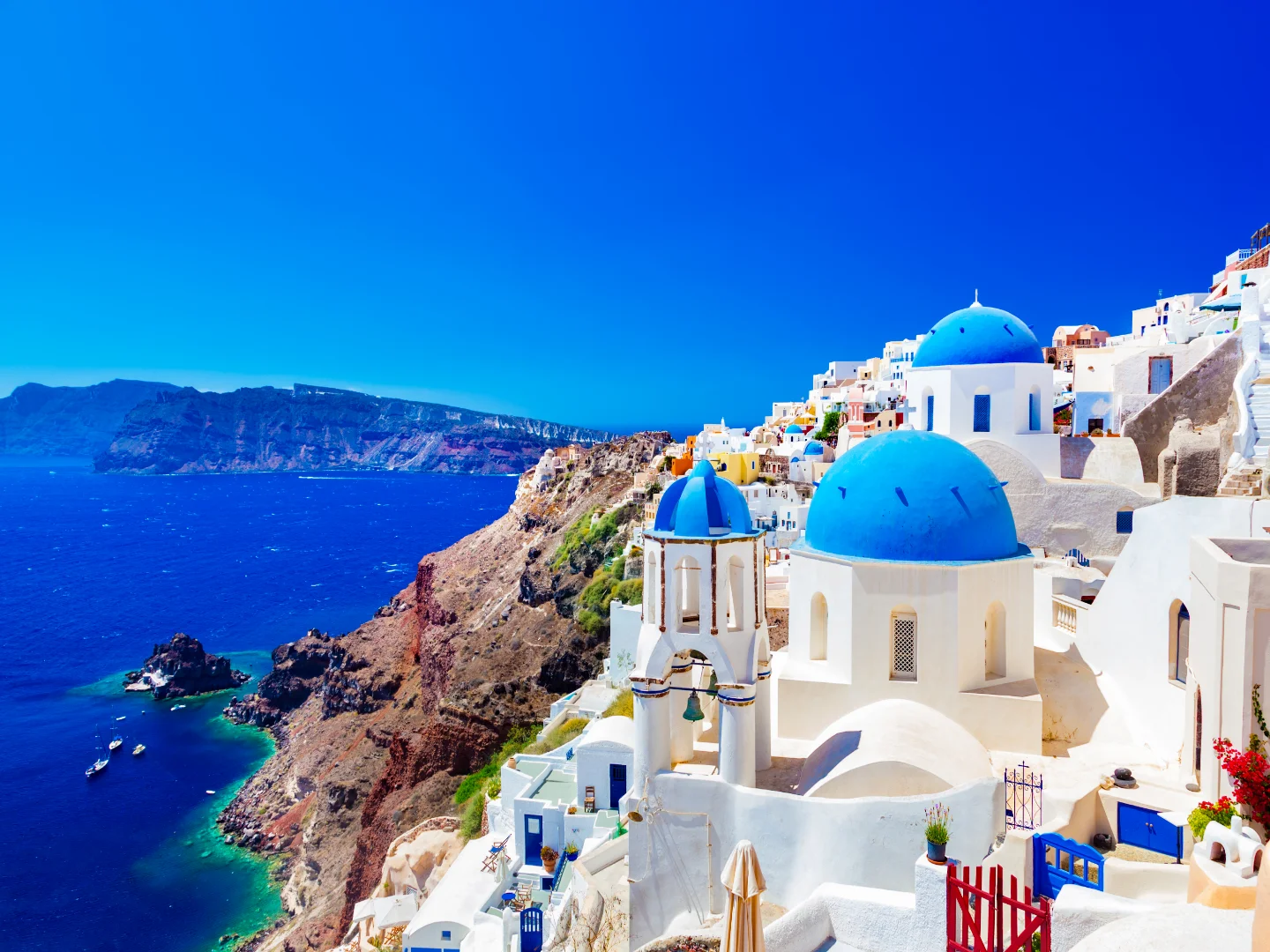
Greece
Explore the Cyclades from Athens to Athens
Set sail on an unforgettable journey through the enchanting Cyclades Islands, where pristine beaches, historical ruins, and vibrant villages await. Starting and ending in Athens, this luxurious yacht charter offers the chance to explore some of Greece's most iconic destinations, including the cosmopolitan allure of Mykonos, the ancient treasures of Naxos, and the unique charm of unspoiled islands.
The Cyclades, an archipelago of 220 islands, each brimming with rich culture and natural beauty, provide a diverse range of experiences. Wander through whitewashed streets, dine on authentic Greek cuisine, or dive into the crystal-clear waters for a day of adventure. Whether you seek history, culture, or simply relaxation, this itinerary promises an idyllic exploration of the Aegean’s most alluring islands.
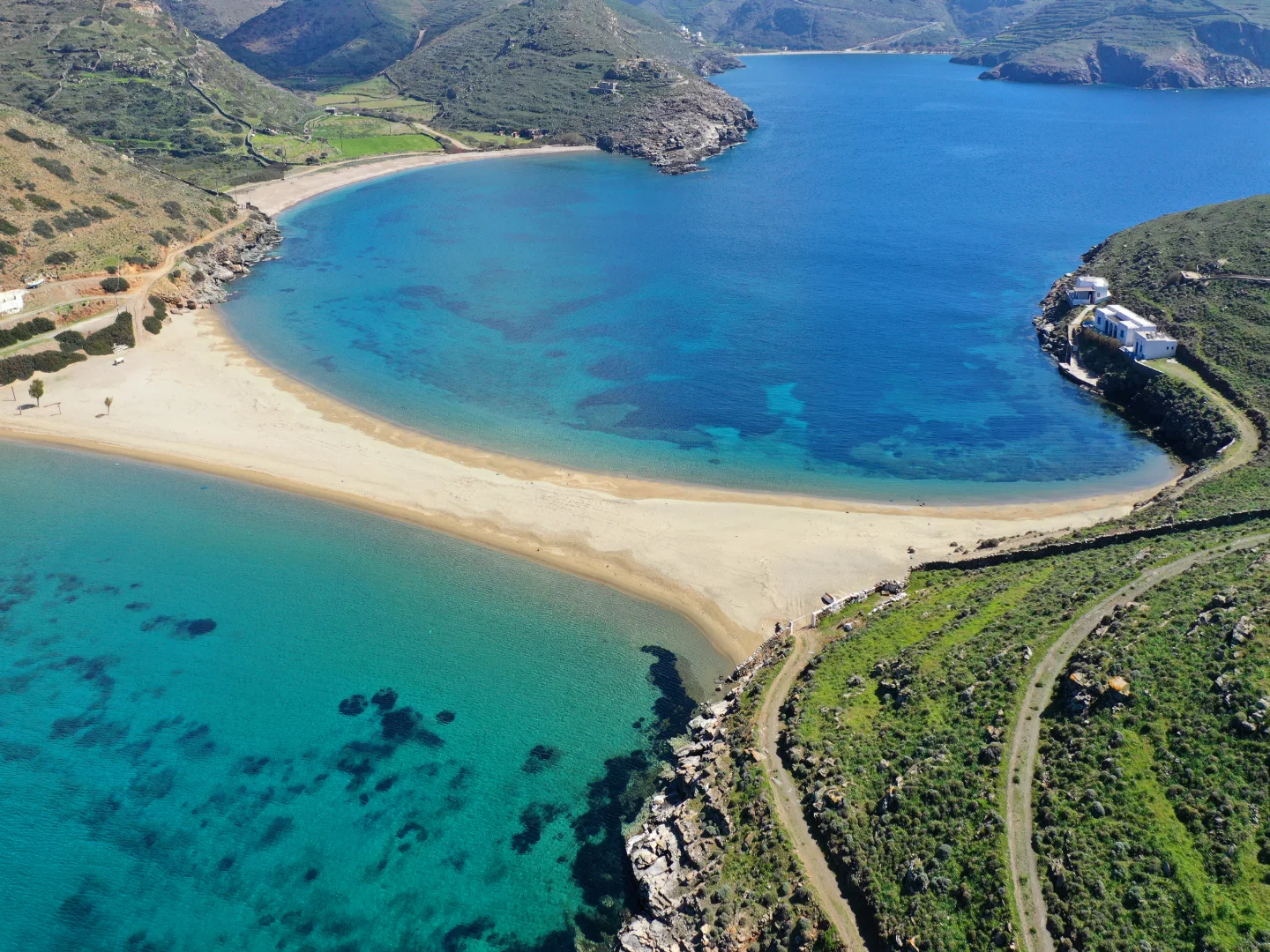
Day - 1
Athens, Cape Sounion, & Kythnos
Set sail from Athens towards Cape Sounion, located at the southernmost tip of the Attica peninsula. Here, you'll find the Temple of Poseidon, a historical marvel offering stunning views of the Aegean Sea. The temple, famed for its cultural significance and as the site of Lord Byron’s etched name, serves as a poignant reminder of ancient Greece.
Next, continue your journey to the charming island of Kythnos in the Western Cyclades. Known for its pristine beaches, the island boasts over 70 shores, many secluded and accessible only by boat. Among its highlights are the thermal springs of Loutra Bay, believed to have healing properties, and Katafiki Cave, one of Greece’s largest.
Kythnos also offers a fascinating historical perspective, with ancient settlements dating back to the Mesolithic period. Explore the Maroulas site near Loutra, where evidence of early civilizations has been uncovered, revealing artifacts from a time long past.
From its breathtaking landscapes to its ancient heritage, Kythnos provides a peaceful and enriching experience for all visitors, offering both relaxation and discovery.

Day - 2
Syros & Mykonos
Syros is home to the capital of the Cyclades archipelago, Ermoupoli, known for its neoclassical architecture and vibrant culture. Other charming towns like Ano Syros, Galissas, and Kini provide a glimpse into the island's rich history and laid-back ambiance. Ermoupoli, with its striking landmarks such as the Town Hall and Apollo Theatre, offers a blend of tradition and modernity.
A short cruise from Syros takes you to Mykonos, an island famed for its lively nightlife and welcoming atmosphere. Mykonos, once a tranquil fishing village, has evolved into a global hotspot, with its iconic landmarks such as Petros the Pelican, the island’s mascot, and the famous Kato Mili windmills. These historical windmills offer sweeping views of the island and were once used by the Venetians in the 16th century to mill flour.
Another iconic spot in Mykonos is Little Venice, a picturesque area where colorful houses cling to the water’s edge, offering a blend of charm and maritime history. The vibrant town of Chora, with its labyrinthine streets and bustling boutiques, captures the essence of the island’s mix of traditional charm and modern luxury.
Mykonos also boasts numerous sheltered bays, ideal for water activities such as snorkeling, windsurfing, and swimming. The island’s coastal beauty and the contrast between its natural landscapes and cosmopolitan vibe make it an unforgettable destination for any traveler.

Day - 3
Delos, Rinia, & Paros
Delos, situated near Mykonos, is a UNESCO World Heritage Site and one of the most important archaeological locations in Greece. Steeped in myth, it is believed to be the birthplace of Apollo and Artemis. Extensive excavations have revealed a wealth of ancient artifacts, many of which are displayed in the Archaeological Museum of Delos and the National Archaeological Museum in Athens. The island, once a thriving sanctuary, offers a profound glimpse into ancient Greek culture and religion. A guided tour is highly recommended for a thorough exploration of the site’s temples, mosaics, and the Sacred Lake.
Rinia, often referred to as Greater Delos, is a serene and nearly uninhabited island located just a short distance from Delos. Known for its tranquil bays and unspoiled landscapes, Rinia provides a peaceful retreat for those looking to escape the crowds and enjoy a more private, natural setting. It is an ideal spot for anchoring overnight before continuing the exploration of the nearby Delos ruins.
Paros, located to the west of Naxos, is renowned for its charming villages, picturesque beaches, and scenic footpaths that connect traditional towns. The island’s capital, Parikia, is home to the stunning Panagia Ekatontapiliani, a 4th-century Byzantine church. To the north, the village of Naoussa enchants visitors with its Venetian fortress, colorful harbor, and narrow alleys filled with local shops. Paros also offers some of the best beaches in the Cyclades, where you can relax, indulge in water sports, or savor a delicious meal at one of the island's fine tavernas, enjoying fresh seafood and local specialties.
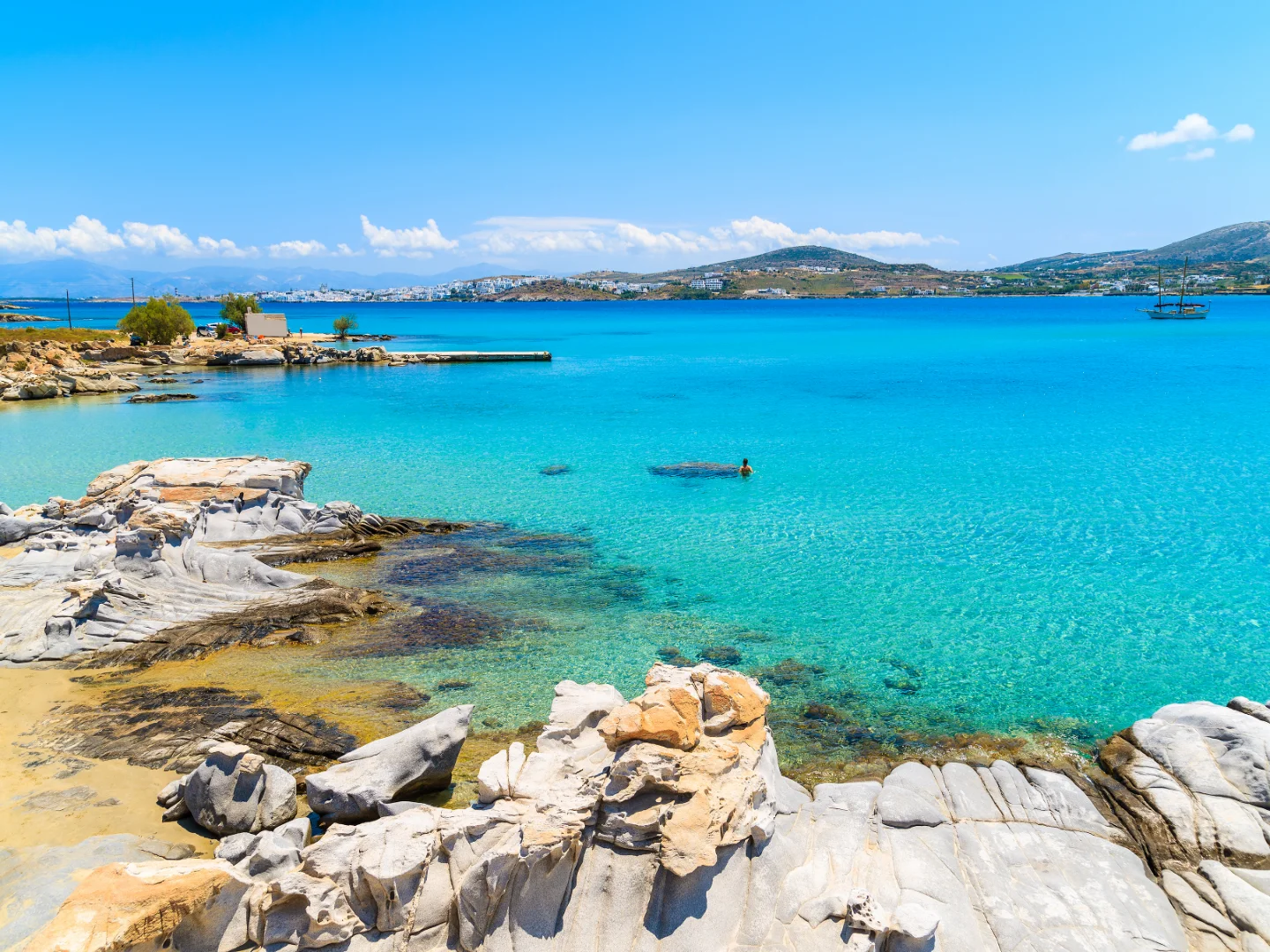
Day - 4
Kolymbithres & Folegandros
Kolymbithres, located across from Naoussa’s harbor, is renowned for its crystal-clear waters and unique rock formations. The bay offers a peaceful and picturesque setting, perfect for swimming and water sports, allowing visitors to explore the serene surroundings before heading out for a delicious lunch. The striking granite formations of Kolymbithres make it an idyllic spot for a day of relaxation and enjoyment under the Greek sun.
Folegandros is a hidden gem in the Cyclades, offering a stunning blend of rugged cliffs, dramatic caves, and untouched landscapes. The island’s capital, Chora, perched on a 200-meter-high cliff, is the epitome of Cycladic charm. Its narrow cobblestone streets are lined with traditional whitewashed houses adorned with vibrant doors and windows. Visitors can savor the breathtaking sunset while enjoying a meal at one of the quaint cafes or taverns that dot the village.
The small village of Karavostasis, located at the port, welcomes visitors with its peaceful ambiance, while Ano Meria offers a glimpse into the island’s rich heritage at its Ecological and Folklore Museum. With secluded beaches, tranquil waters, and timeless beauty, Folegandros remains a serene escape for those seeking an authentic Greek experience.

Day - 5
Polyaigo & Milos
Polyaigos, an uninhabited island in the Cyclades, is a hidden treasure near Milos and Kimolos. The island, whose name translates to "many goats," is home to a large population of goats, the sole residents of the island. Polyaigos offers pristine beaches along its southern shores, ideal for snorkeling in clear waters teeming with marine life. The island is also known for its sea caves, which provide shelter to the endangered Mediterranean monk seals.
From Polyaigos, journey to Milos, a volcanic island famed for its dramatic geological features and rich history. Milos is a place of natural wonder, with unique landscapes shaped by ancient volcanic activity. The island boasts some of the Mediterranean's oldest mines, adding a historical layer to its geological intrigue.
Milos is also known for its charming villages, each with its own distinct character. Pláka, the island's capital, offers stunning views, while Adámantas, the lively harbor town, pulses with energy. The peaceful village of Hivadolímni is perfect for unwinding, while Emporiós is marked by old iron mines and the tranquil Revary Lagoon.
In addition to its natural beauty, Milos is home to fascinating archaeological relics, including ancient statues of Asclepius and depictions of gods like Poseidon and Apollo. As you explore, don’t miss the surreal Sarakíniko with its white, moon-like rock formations, or the secluded Kléftiko caves, accessible only by boat, offering an unforgettable experience in crystal-clear waters.
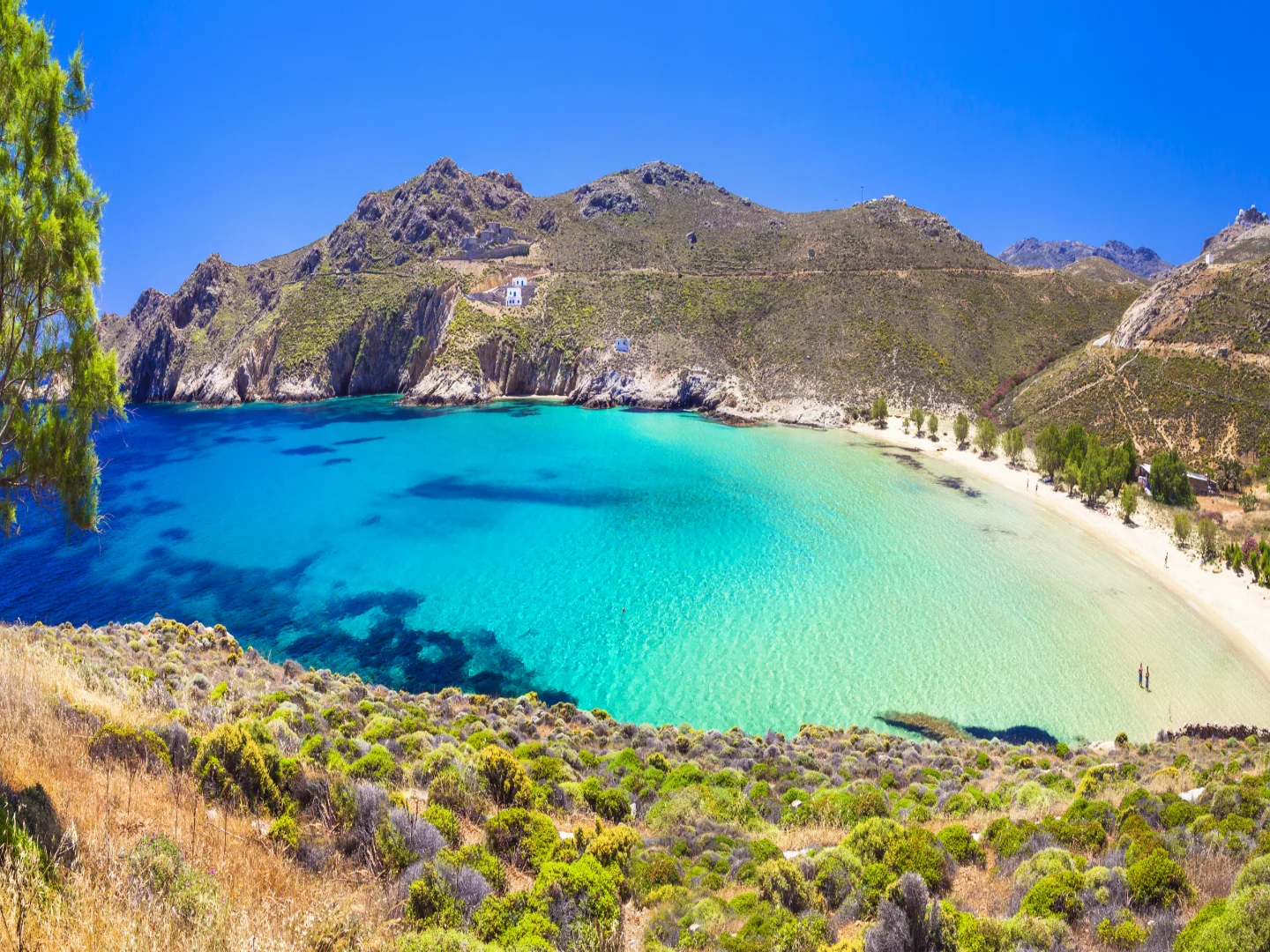
Day - 6
Serifos & Kythnos
Serifos, located in the western Cyclades, offers a captivating blend of traditional Cycladic charm and ancient history. The island’s capital, Chora, sits majestically atop a rocky hill, providing a striking view from afar. Divided into two sections, Pano Chora (upper town) and Kato Chora (lower town), the quaint streets are lined with charming cafes, bars, and tavernas. A visit to the 15th-century Venetian castle rewards travelers with panoramic views of the surrounding sea. Serifos is also home to the remarkable Aspros Pirgos (White Tower), a Hellenistic marble watchtower dating back to around 300 BC, offering a glimpse into the island’s rich past.
Kythnos, situated between Kea and Serifos, is known for its stunning bays and natural beauty. The island’s most famous spots include the Loutra harbor, known for its thermal waters that flow from a nearby hot spring onto the beach, providing a therapeutic and serene setting. Just a short distance away, Kolona beach features a crescent-shaped sandbar, with a unique thermal spring offering a captivating experience for visitors. With its unspoiled landscapes and charming coastal villages, Kythnos is a peaceful retreat for those seeking both relaxation and natural beauty.

Day - 7
Agia Marina & Athens
Agia Marina, located on the eastern shores of Aegina Island, is a popular summer destination for both locals and international travelers. The bay features a 500-meter-long sandy beach, with calm, crystal-clear waters that create a perfect environment for water sports and snorkeling. Protected from the northern winds, this picturesque spot is ideal for swimming, relaxing dinners, and peaceful overnight stays. Its close proximity to Athens ensures an easy and swift return for disembarkation, making it a convenient yet idyllic final stop on your journey.
Yachts in Greece to explore this itinerary
{day}
